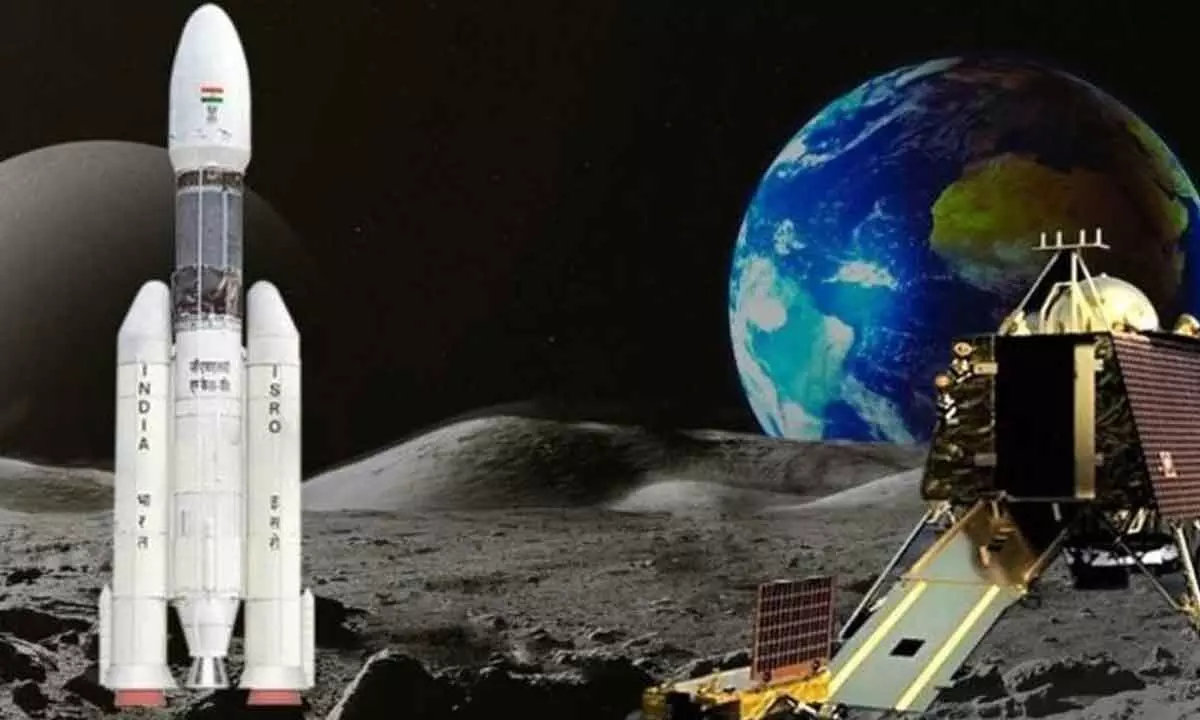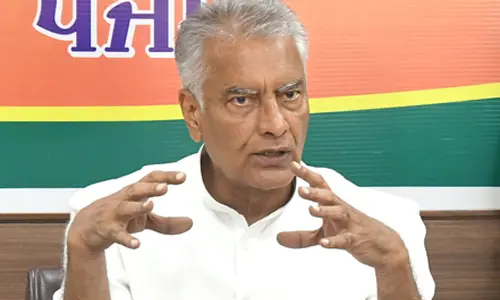Mission Chandrayaan: A big lift to India’s spacefaring

Legal concerns revolving around the use of outer space for security and defence purposes by different nations is slowly forming a significant discourse in international space law. This question is all the more significant in the light of the fact that space and its resources can be made accessible to all the countries, and not just the superpowers
Chandrayaan-3, carrying the hopes and dreams of India in India’s third mission to moon, was successfully launched on 14th July, 2023 from Satish Dhawan Space Centre at Sriharikota, Andhra Pradesh.
The successful lift-off shows that India’s space organization, ISRO, has the capability for safe and soft landing near the lunar south pole. Rover roving on lunar surface will study its environment. Chandrayaan-3 has to ensure over a month-long journey before landing on the lunar surface approximately on 23-24 August. If it does so successfully, India will become the 4th country after US, Russia and China to safe land on the lunar surface and also the first country to touch lunar south pole.
The Chandrayaan-3 mission is expected to be a decisive moment for India, providing an edge in the space exploration race and contributing to the Indian economy. The successful landing will boost investor confidence, attract private investment in space technology, and generate thousands of jobs. The Indian space industry, which has supplied space-grade hardware for the mission, will also benefit from increased revenue flow and investments. The mission will also open up commercial opportunities for Indian companies and startups in the space sector, adding to India’s goodwill in the space league and serving as a technology demonstrator for future moon missions.
With the success of Mission Shakti, India will also have demonstrated its satellite technological capability by placing a satellite 300 km away in the low earth orbit (LEO) which is a major milestone in the history of India’s Space Programme. This missile technology aimed at strengthening India’s overall security and became fourth country in the world after United States, Russia and China. There is every reason for the country to feel proud of this historic achievement of our scientists under very demanding time schedules and other constraints.
Earlier, with the successful ‘take off’ of ‘Mangalyaan’ India also took a giant leap in its march to Mars planet and became the fourth country in the world to undertake such a mission close on the heels of USA, Russia and EU and leaving China well behind. With the successful launch of 104 satellites on a single mission on February 14, 2017, India created history by overtaking the previous record of 37 satellites launched by Russia in 2014. With the launch of 11 satellites from one space vehicle, India displayed its prowess in space technology in the year 2008. In February 2013 with the successful launch of 6 satellites, it has once again proved that in the field of space technology, India is a force to reckon with.
India’s capabilities in space programmes: With these developments, India is one of the few countries, which have realised the immense potential of space technology for national development. It is a member of the exclusive group of few nations with the capacity of launching and operating their own satellites. Today, the Indian space programme has not only achieved considerable self-reliance in space technology but also promoted its commercial utilization. Building upon its rich expertise it has gathered through the years, it is bound to continue as a global leader in the space industry. Because of the recent trends of globalization, liberalization, privatization and commercialization, the area is bound to experience several legal issues including contract fulfillment and dispute resolution with huge stakes involved and the present legal structure is grossly inadequate to deal with these changes. Hence, there is an urgent need to for India to legislate on these issues.
Conclusion: Legal concerns revolving around the use of outer space for security and defence purposes by different nations is slowly forming a significant discourse in international space law. This question is all the more significant in the light of the fact that space and its resources can be made accessible to all the countries, and not just the superpowers. Barriers to entry are lower than ever, and many countries are enjoying access to and the benefits of space in unprecedented numbers. Today, space is the domain of a growing number of satellite operators; approximately 60 nations and government consortia operate satellites, as well as numerous commercial and academic satellite operators. Paradoxically, while it is becoming increasingly easier to access as well as benefit from space, space is also becoming increasingly congested and contested.
(Writer is Professor of International Law and Head Center for Aerospace and Defence Laws (CADL), NALSAR University of Law, Hyderabad)














